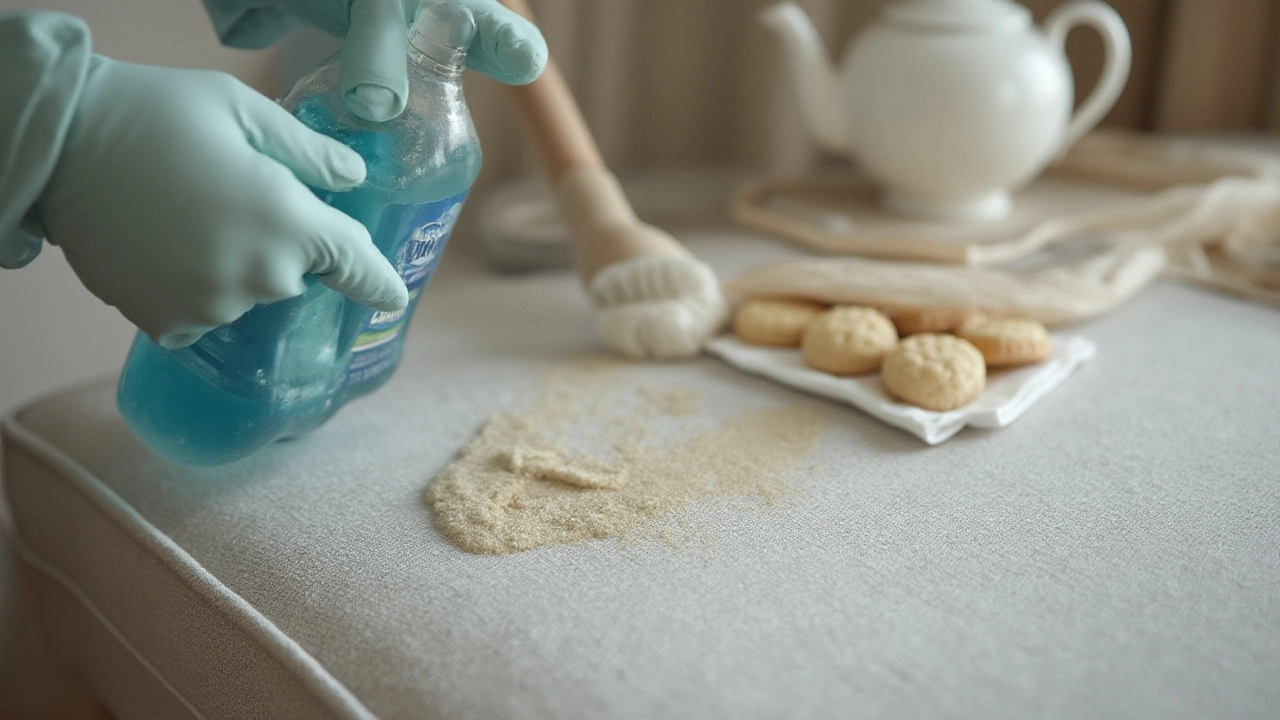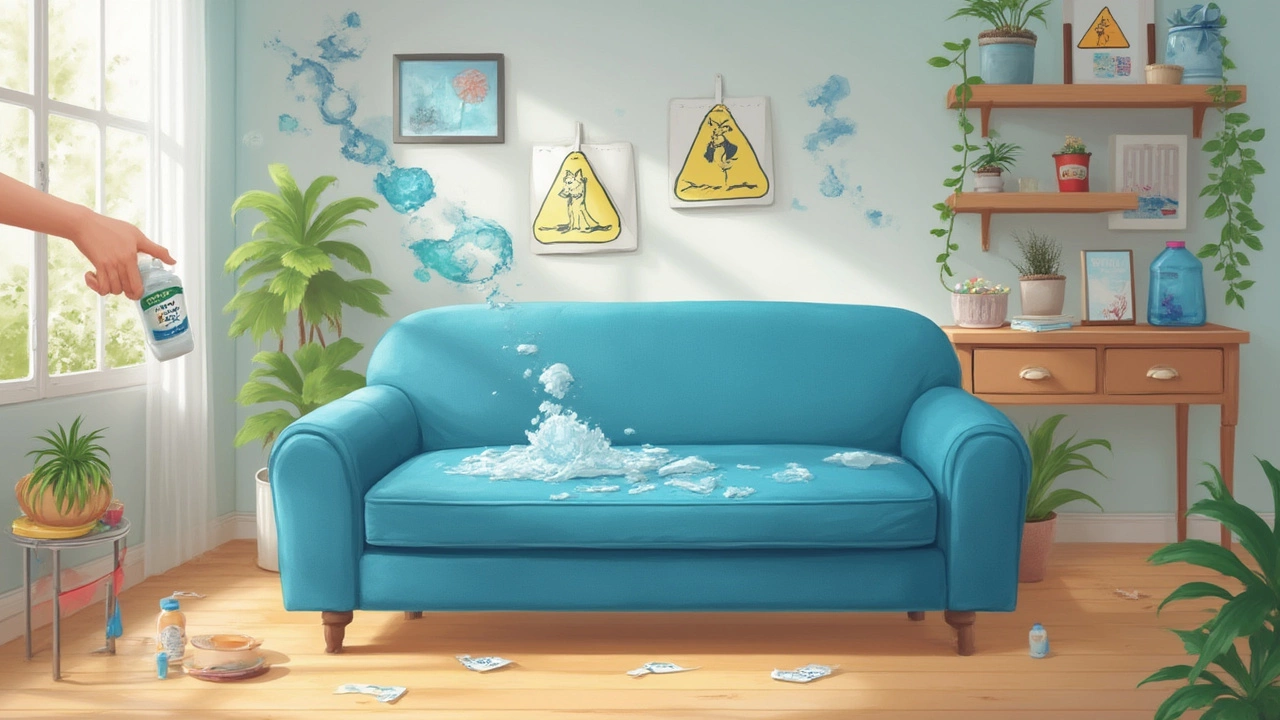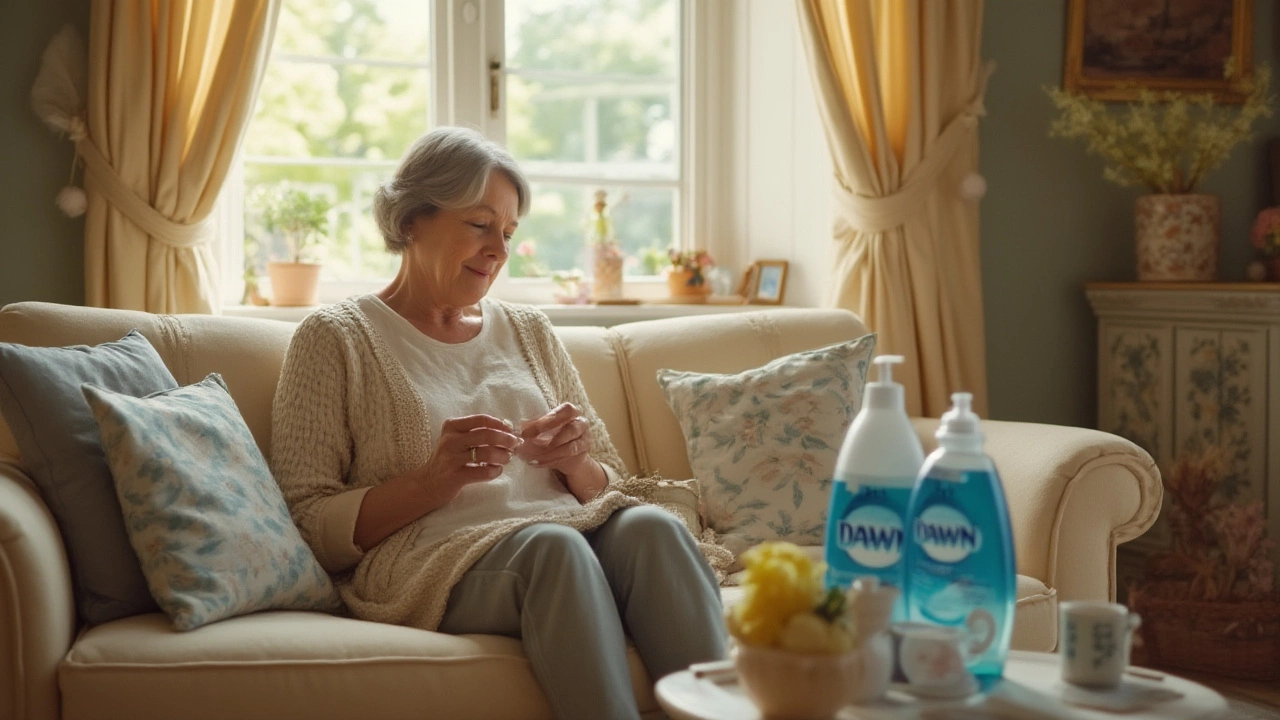Spilled coffee on your favorite fabric couch? Or maybe there’s a mysterious stain that just won’t budge, and you’re eyeing that blue bottle of Dawn dish soap under your sink. Lots of people swear by it for everything from greasy pans to pet baths—but when it comes to fabric furniture, things aren’t so straightforward. You know that urge to find one magic product that fixes everything? Turns out, dish soap can actually work wonders on upholstery, but only if you know the trick to using it right. Let’s get into the real-world truth behind this household cleaning myth and see if Dawn is a friend or foe to fabric couches.
Why People Reach for Dawn Dish Soap for Cleaning Upholstery
Dish soap like Dawn has kind of a cult following for its grease-cutting superpowers. The reason is simple: it’s formulated to break down fats and oils on dishes, and that same property can be clutch on upholstered furniture, where stains often have an oily base (think salad dressing spills or those buttery popcorn marks). Dawn, in particular, is admired because it’s mild enough on skin that researchers at International Bird Rescue trust it to clean oil-soaked wildlife—sounds gentle, right?
So, if you’re thinking about using dish soap on your couch, here’s the logic: Dawn effectively lifts stubborn stains without leaving behind heavy residues or odors. Plus, it’s cheap, most folks already have it at home, and it’s known to rinse out more easily than laundry detergent or carpet shampoo. There’s also this cool bit—Procter & Gamble (the company that makes Dawn) has run TV ads showing penguins getting washed with it, which gave people the idea that it’s super gentle.
Still, not every kitchen cleaner is a hero for your living room. Fabric couches have delicate fibers, sometimes a mix of materials, and they can be quick to trap moisture, making mold or residue more likely. People choose Dawn because it gives you the sense you’re keeping things simple and non-toxic, but there’s an art to using it. Used wrong, you could end up with soap marks or even faded color patches. The allure of Dawn is its reputation and versatility, but it’s not completely failproof on all fabrics. There’s a bit more to the story than just grabbing the blue bottle and getting scrubbing.
The Science: What Makes Dawn Work (and When It Doesn’t)
Dawn’s formula is a bit of a nerd magnet if you love chemistry. The secret is its mix of surfactants—compounds that lower surface tension and surround grease particles—letting them lift away from whatever they’re stuck to. These same molecules are why oil and water, which normally don’t mix, end up swirling together and rinsing out. That’s why chefs, artists, and car mechanics use Dawn to get their hands clean, not just their plates.
The catch is, fabric couches can have coatings, tricky weaves, or delicate colors that react badly to strong soaps or anything alkaline. While Dawn is less harsh than many other cleaners, it’s not pH-neutral. According to textile experts, overusing soap—even a gentle one—can damage finishes or loosen dyes over time. The Material Data Safety Sheet for Dawn rates it as a mild irritant, but it can still be too strong for silk, linen, or specialty fibers like viscose or rayon.
Another interesting detail—when you mix Dawn in water, it works best in low concentrations. Research from university cleaning labs shows that a ratio of about 1 teaspoon per 2 cups of water is plenty powerful on most stains, and using more usually means more residue, not more clean. These soapy residues can attract dust, making your couch even dirtier after a while. And on darker fabrics, soapy spots sometimes show up as water rings or faded blotches, especially if not fully rinsed.
So, while Dawn has superhero cleaning abilities, even superheroes have weaknesses. If the couch says “dry-clean only” or has a “W/S” code, tread cautiously. Always spot test: mix up a little solution, dab it on a hidden area, let it dry, and check for discoloration or stiffness. If the test passes, you should be good to go, but if not, there’s no shame in leaving the job to a pro. And when it comes to using Dawn, less soap and more water wins—overdoing it can haunt you later.

Step-by-Step: How to Safely Clean a Fabric Couch with Dawn Dish Soap
Ready to give it a try? You don’t need a chemistry degree for this, but a little patience goes a long way. Here’s how to do it right—and avoid wrecking your couch in the process:
- First, check your couch’s care label for cleaning codes. “W” means water-based cleaners like Dawn are OK. “S” means solvents only, which rules out water or soap. “W/S” means you can use both (lucky you).
- Vacuum the entire surface. It seems boring, but if you skip this, you might grind in dust or crumbs and make stains worse.
- Mix a cleaning solution: Use about 1 teaspoon of Dawn dish soap per 2 cups of lukewarm water. Stir it up until you see good suds.
- Dip a clean, white microfiber cloth into the soapy water. Squeeze it out so it’s damp but not dripping.
- Blot the stained area—don’t rub, or you’ll just push the stain deeper into the fibers. Gently work from the outside of the stain in to keep it from spreading.
- For tough stains, you can let the suds sit for a few minutes, but keep the fabric as dry as possible.
- When the stain lifts, get another clean cloth, dampen it with plain water, and blot the area to rinse out the soap.
- Use a dry towel to soak up excess moisture. Avoid air drying in a dark, dank room—direct sunlight or a fan will help prevent water spots or mildew.
If you need to spot treat a huge stain, work in small sections and overlap as you go. A handheld steam cleaner can help rinse and lift out even more residue, especially on tightly woven synthetics. Never pour Dawn directly onto the couch, and never soak the fabric—you’ll regret the puddles in the cushions.
Here’s a simple table to help you with mixing and how much solution you might need, based on how dirty your couch is:
| Level of Dirt | Dawn Soap | Water | Notes |
|---|---|---|---|
| Light stains | 1 tsp | 2 cups | Lift food, mild pet stains, no rinse needed if used sparingly |
| Medium stains | 1.5 tsp | 2 cups | Rinse advised, repeat if needed |
| Heavy/oily stains | 2 tsp | 2 cups | Multiple rinses needed; pretest first! |
Don’t want to remember all this? The bottom line: always use a light touch and more water than soap. That’s the secret sauce for not wrecking your comfy spot.
What to Watch Out For: Possible Risks and Mistakes
Let’s talk worst-case scenarios. Using too much dish soap means sticky residue—yup, the opposite of clean. That stickiness can pull in hair, dust, and even more dirt, leaving you with patchy, dirty-looking spots that call for professional cleaning later. Another risk is over-wetting the fabric, which can make cushions mushy, grow mildew, or leave behind those dreaded water rings (especially on lighter fabrics).
The fabric dye is another wild card: dish soaps don’t contain bleach, but that still doesn’t make them colorfast. Mixing soap and water in too-strong a concentration or rubbing too aggressively can fade dyes or create shadowy marks that just won’t disappear. And here’s a big one—never combine Dawn with ammonia, vinegar, or hydrogen peroxide thinking you’ll “supercharge” the cleaning. Mixing chemicals can break down the fabric or cause bad chemical reactions. Stick to one trusted product at a time.
If you’ve got a velvet, chenille, or silk couch, be even more careful. These materials react differently to moisture and are more likely to show spots. In those cases, spot cleaning with soap is a last resort, and it’s safer to stick with dry-cleaning solvents or to call in a professional.
If you end up with a bigger mess, don’t panic. Several professional upholstery cleaners offer spot treatments that can rescue damaged spots, and there’s no shame in outsourcing the tough jobs—that way, your furniture investment is protected.

Alternative Safe Cleaning Methods for Fabric Couches
If you’re not totally sold on using Dawn, you’re not out of options. There are plenty of gentle, DIY-friendly solutions that can handle most stains without any risk of residue.
- Upholstery-specific cleaners: Brands like Folex or Bissell are designed for fabrics, and while a little pricier than dish soap, they often come with built-in stain removers that won’t leave residues.
- Baking soda: Sprinkle it on the couch, let it sit for twenty minutes, vacuum it up, and it helps neutralize odors. Not all heroes wear capes—sometimes they’re in a yellow box.
- White vinegar diluted with water: For organic stains or odors, vinegar can break down proteins and bacteria without damaging fabric. Use a 1:3 ratio (1 part vinegar, 3 parts water). Always spot test.
- Club soda: Old-school bartender move—dab it onto fresh stains and blot gently. The carbonation can help lift some fresh spills without soap at all.
Just like before, always check your fabric type before going wild with a new cleaner. And if you want to go greener, there are plenty of eco-friendly upholstery sprays and foams out now, which can be even safer for pets and kids—perfect if you want to skip synthetic cleaners entirely.
Still set on using dish soap? Remember, Dawn dish soap is a solid choice for water-permitted couches, when it’s diluted and rinsed well. And don’t forget, the real win is always in how you use it, not just what’s in the bottle. Test, dilute, blot, and dry thoroughly for a clean couch and peace of mind.
